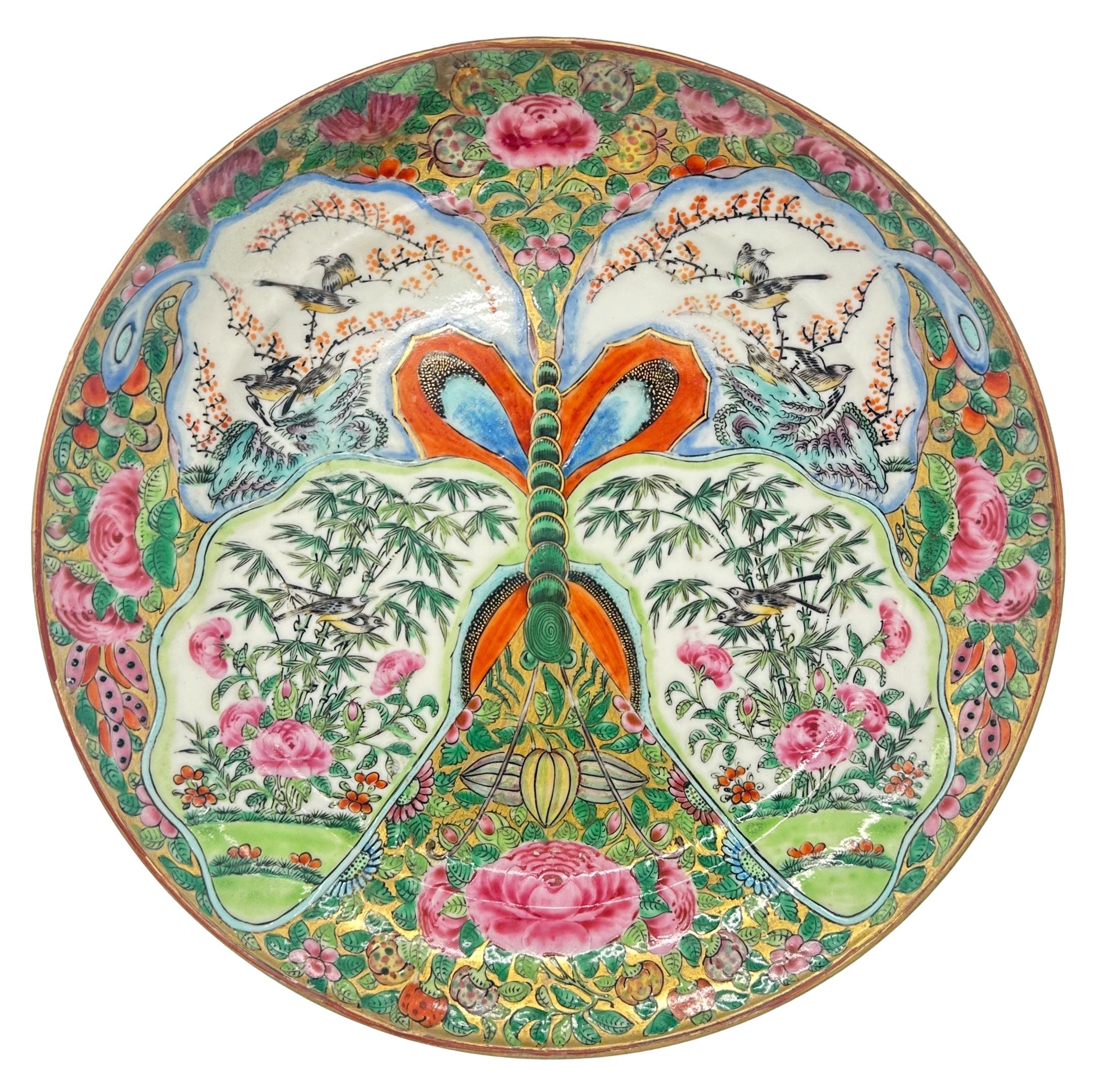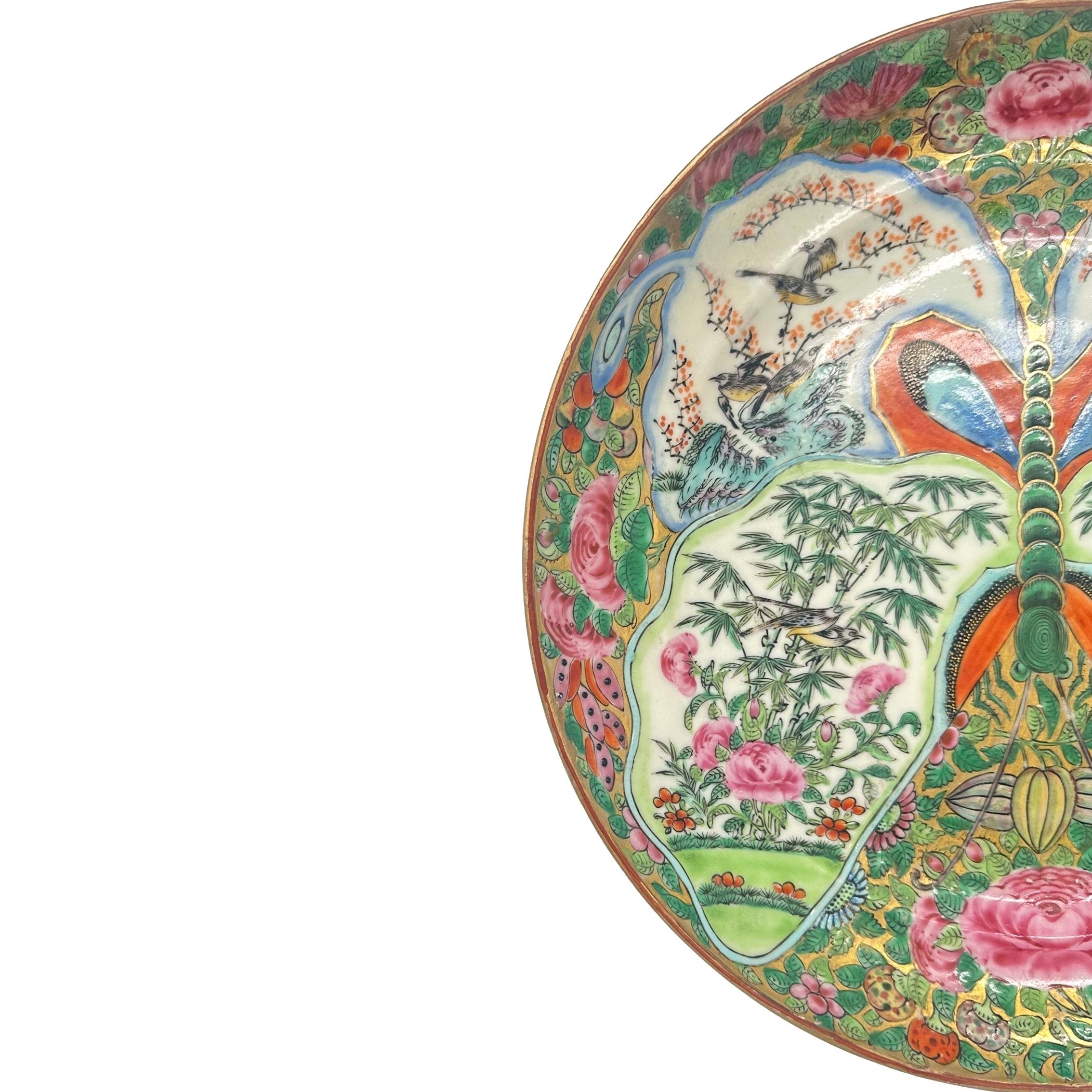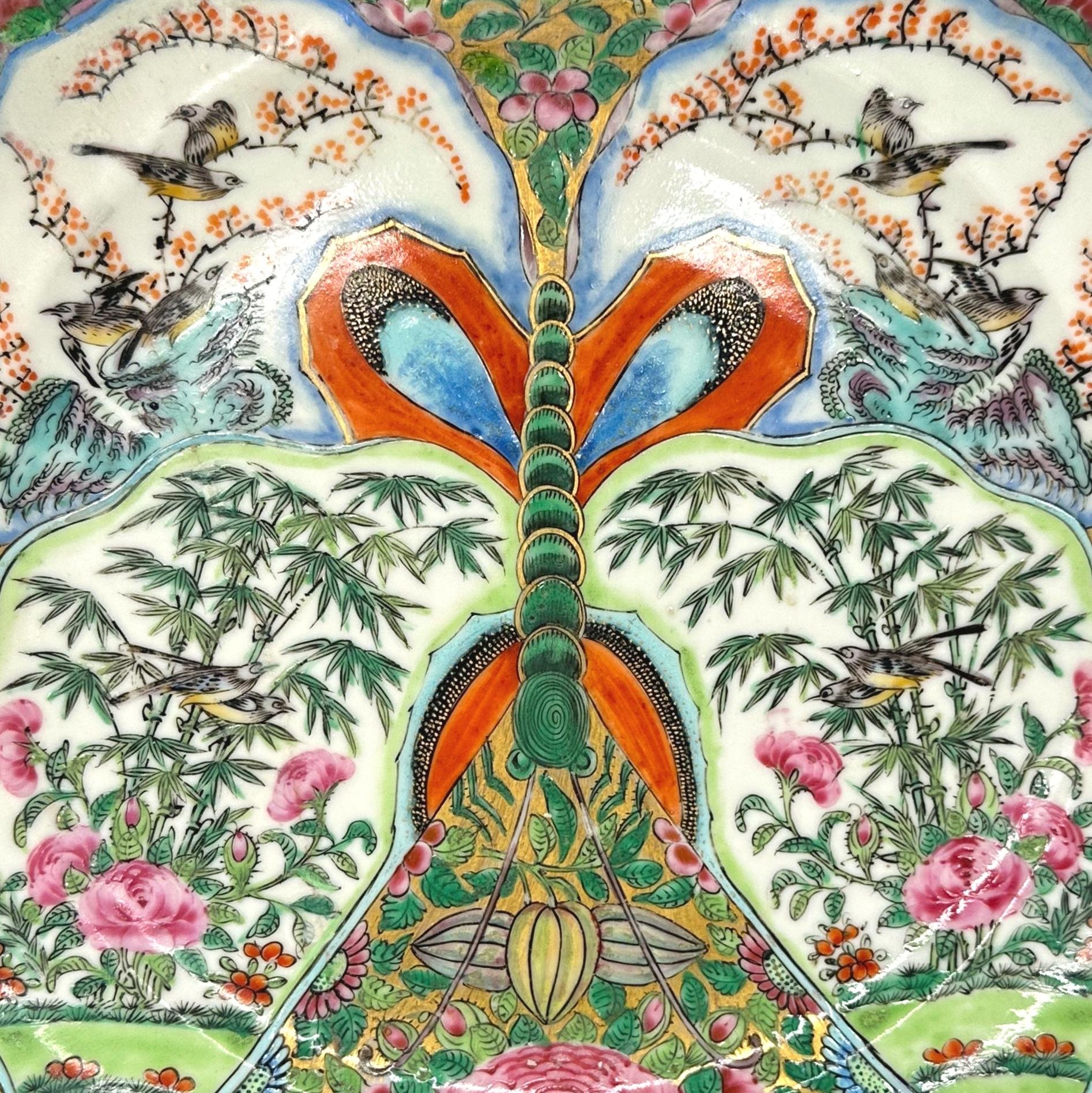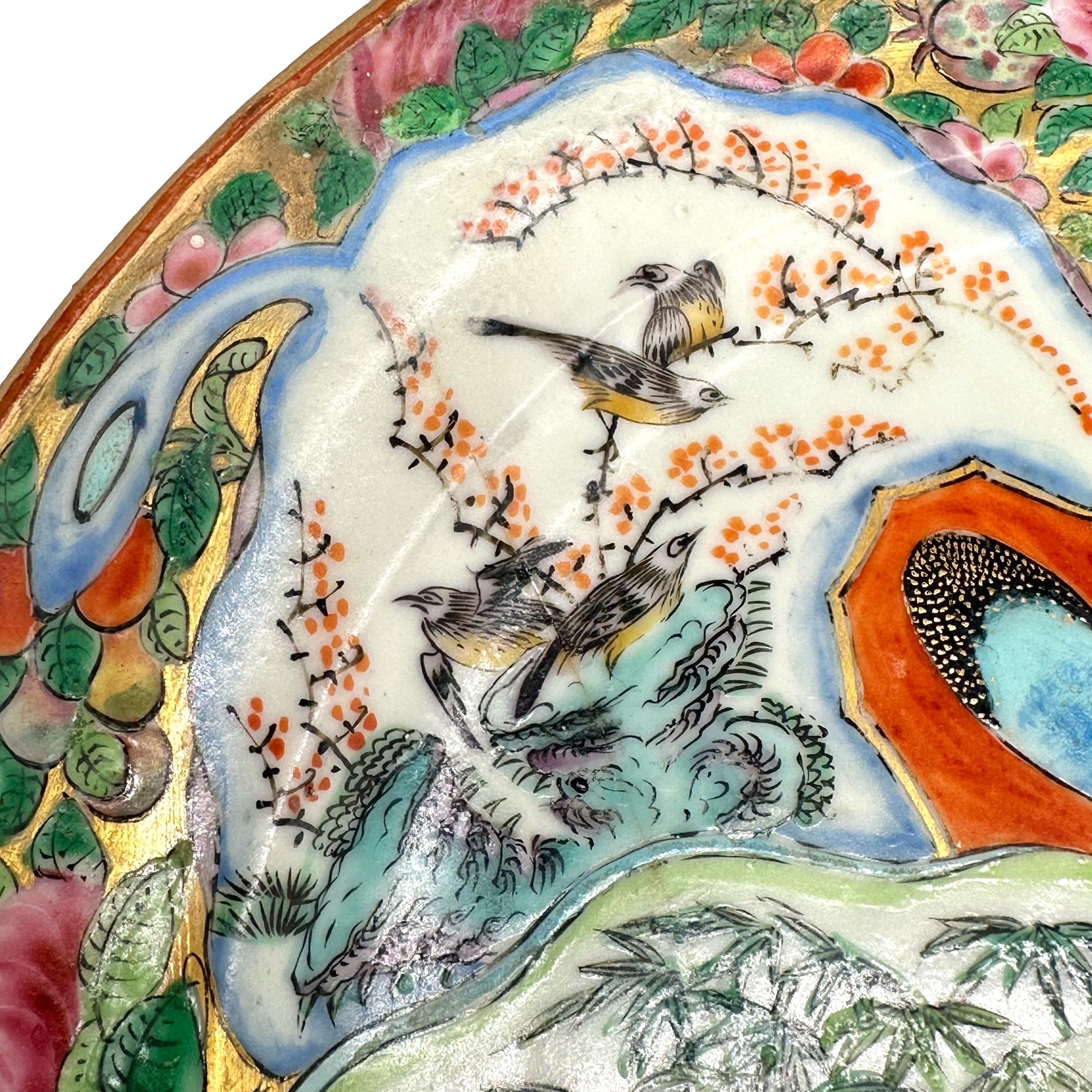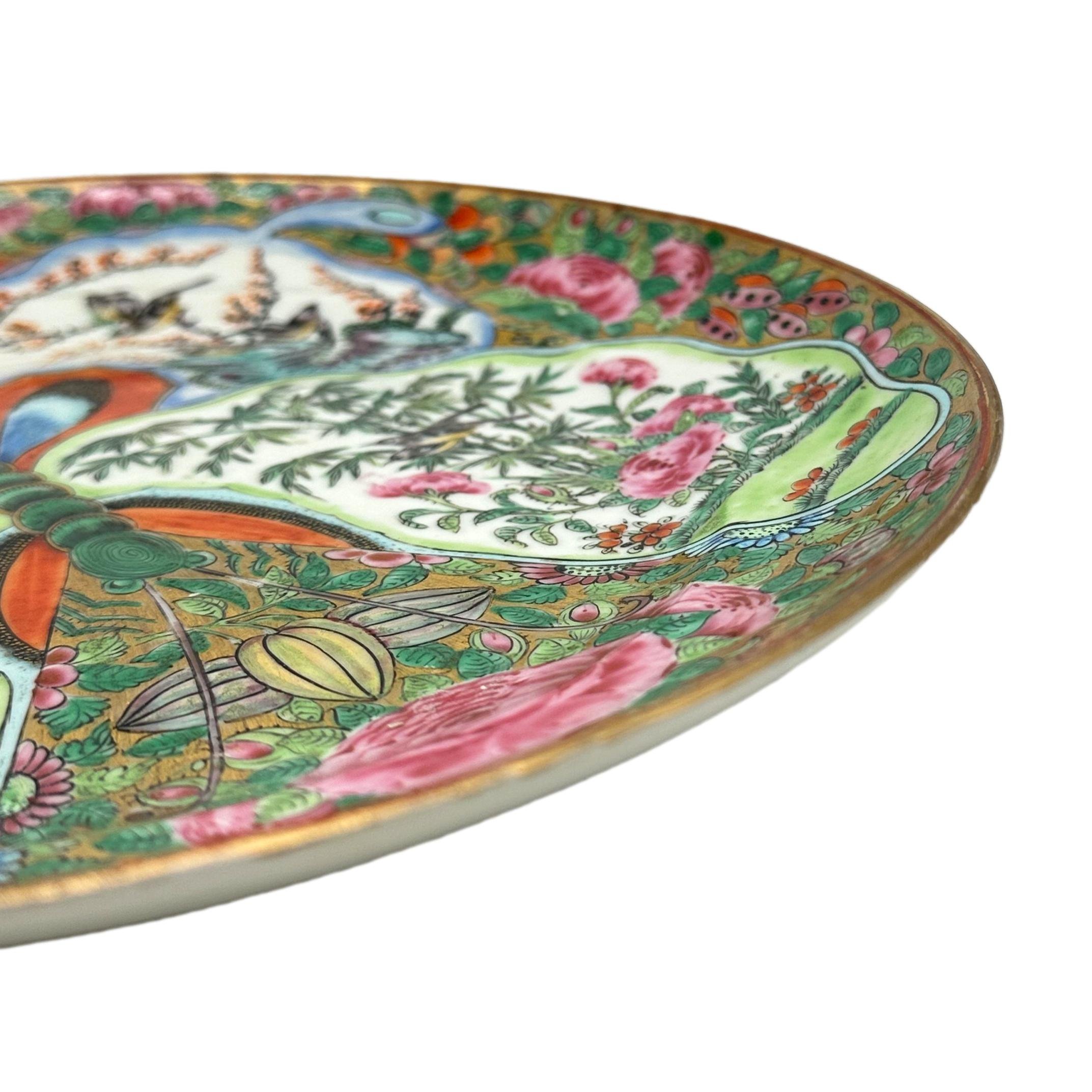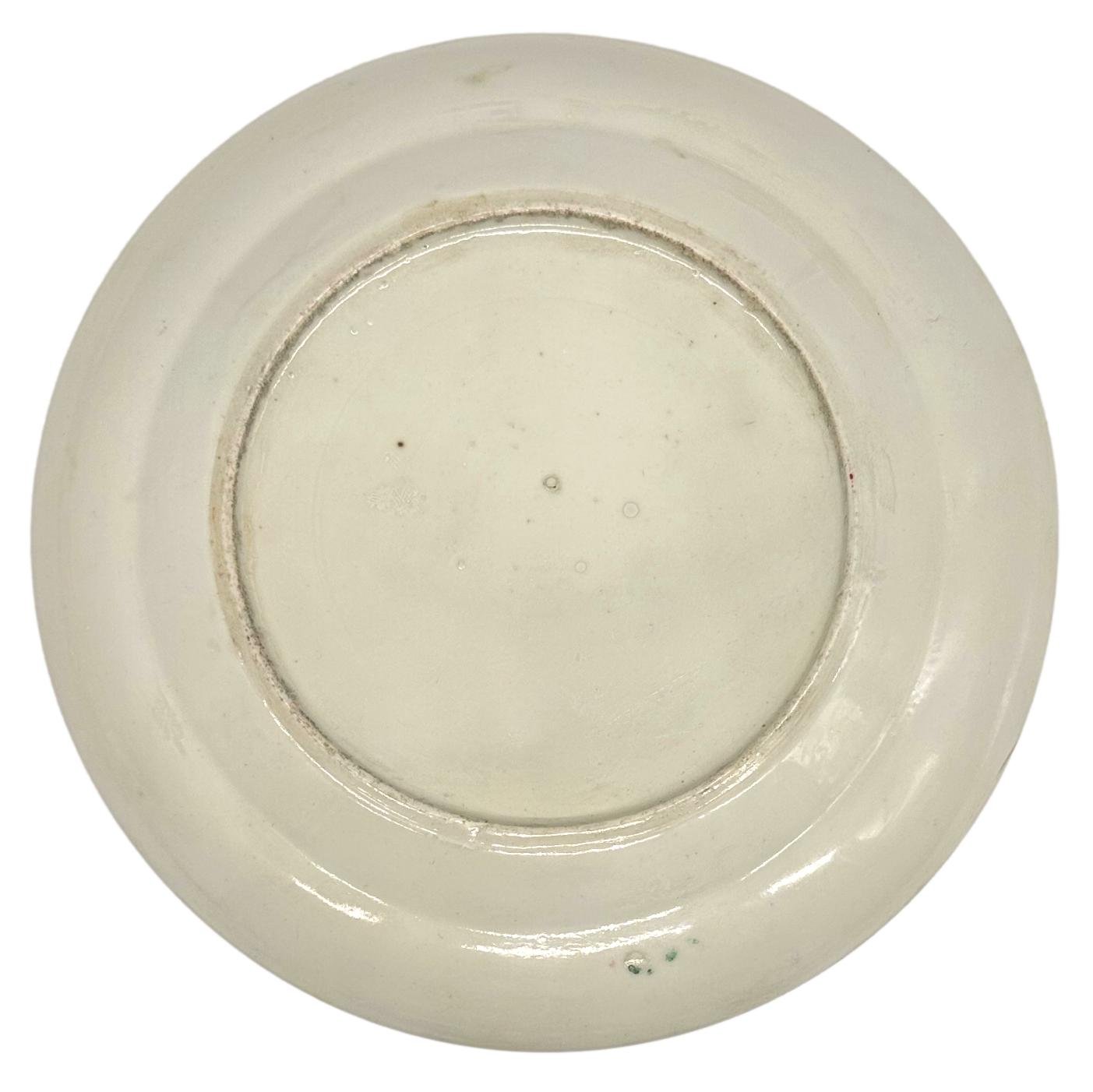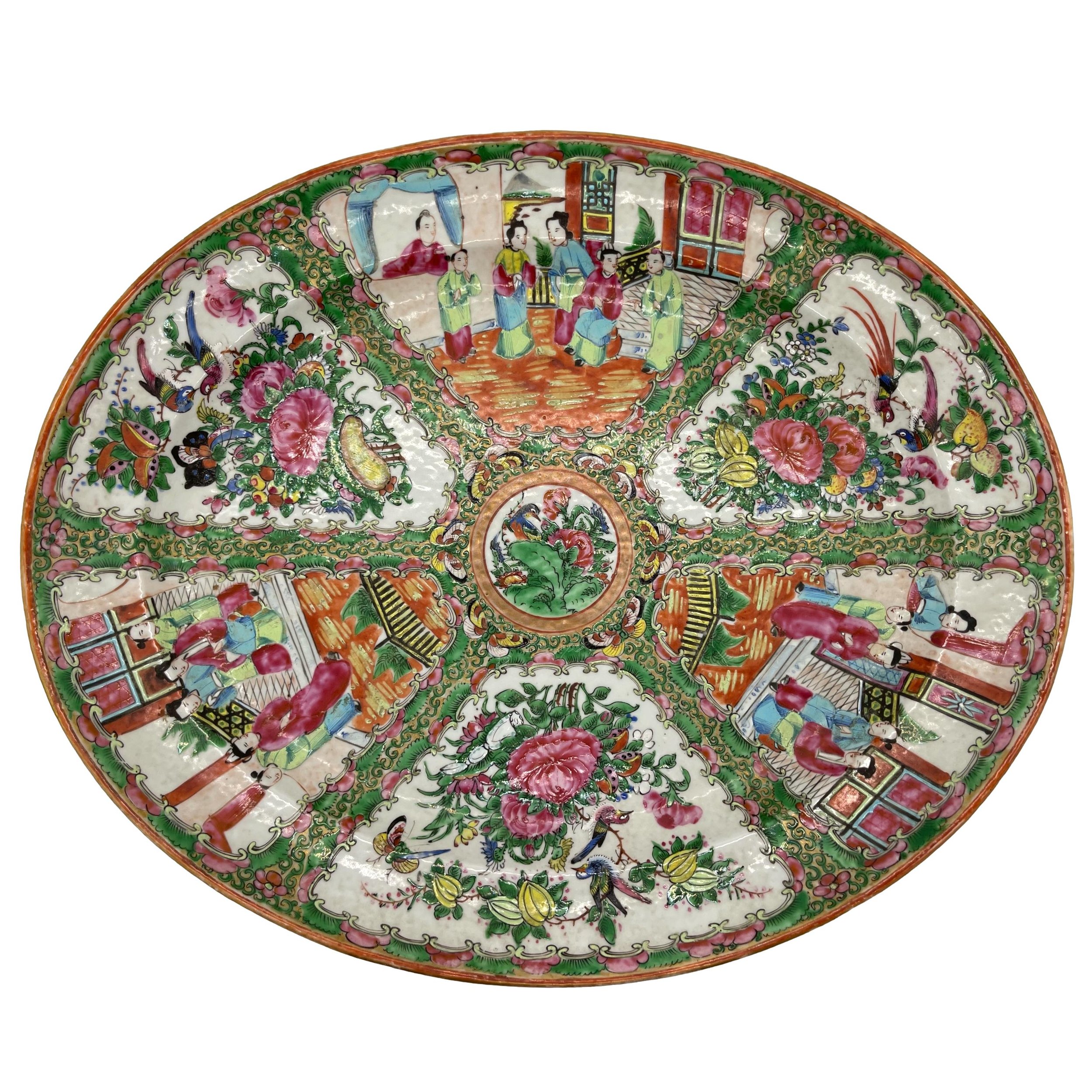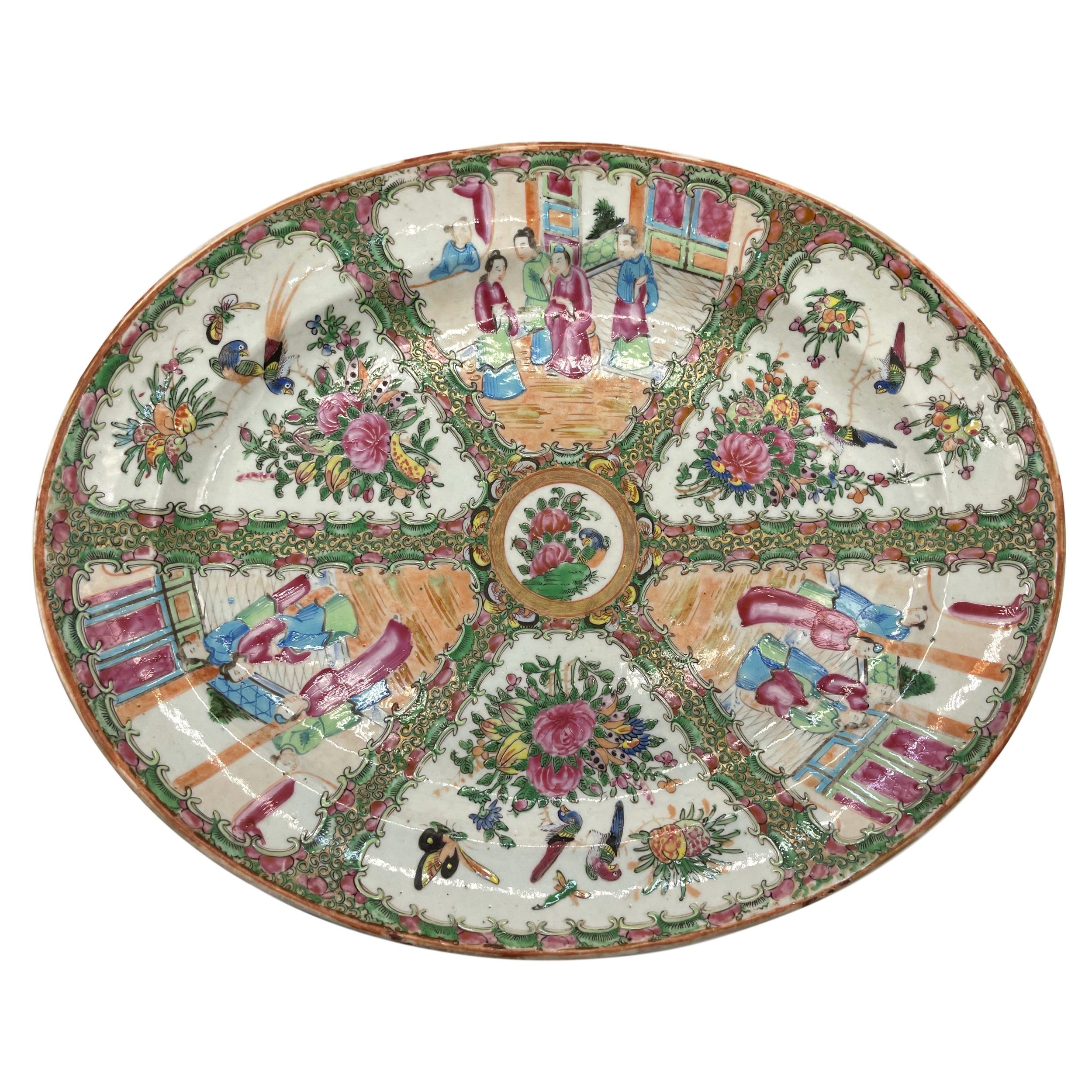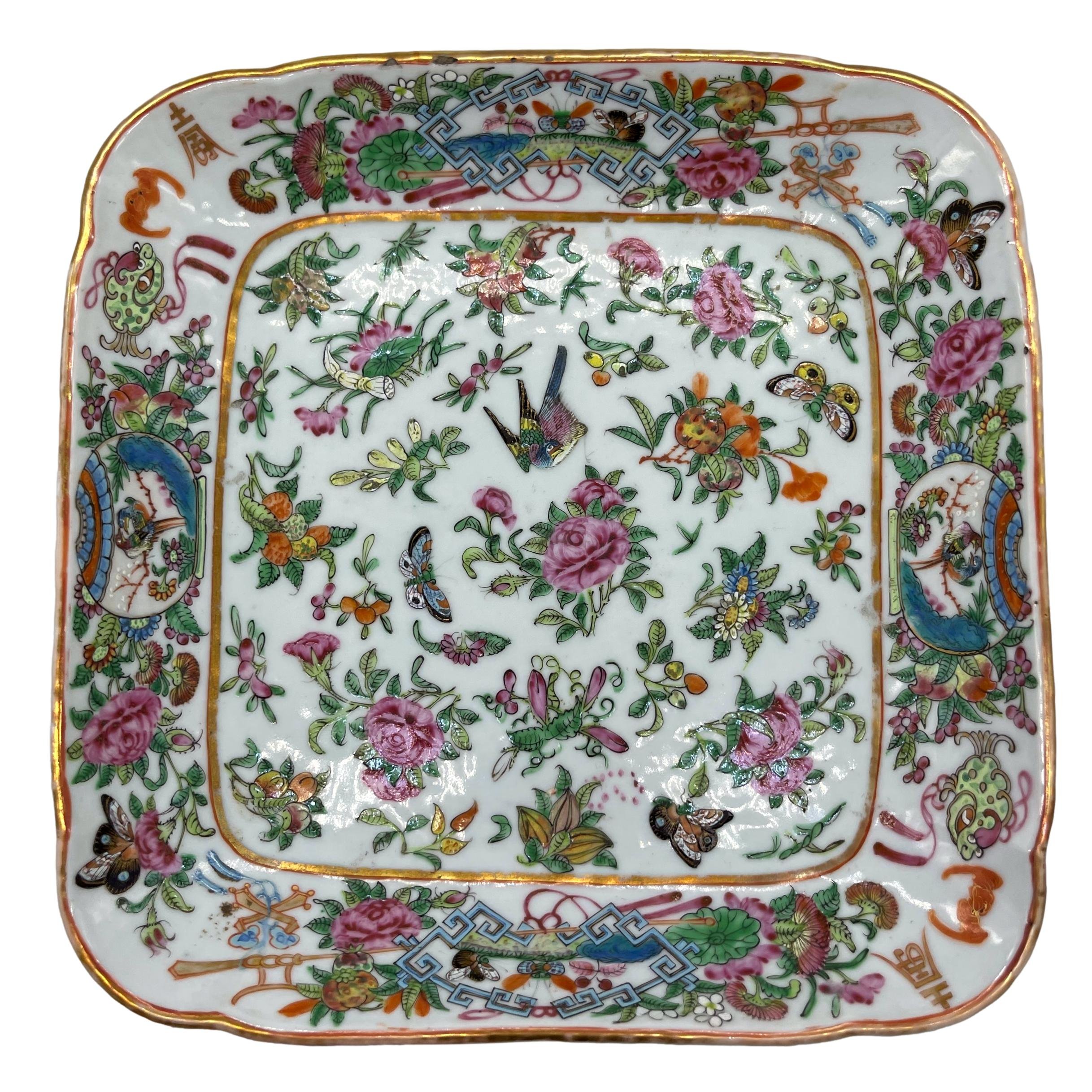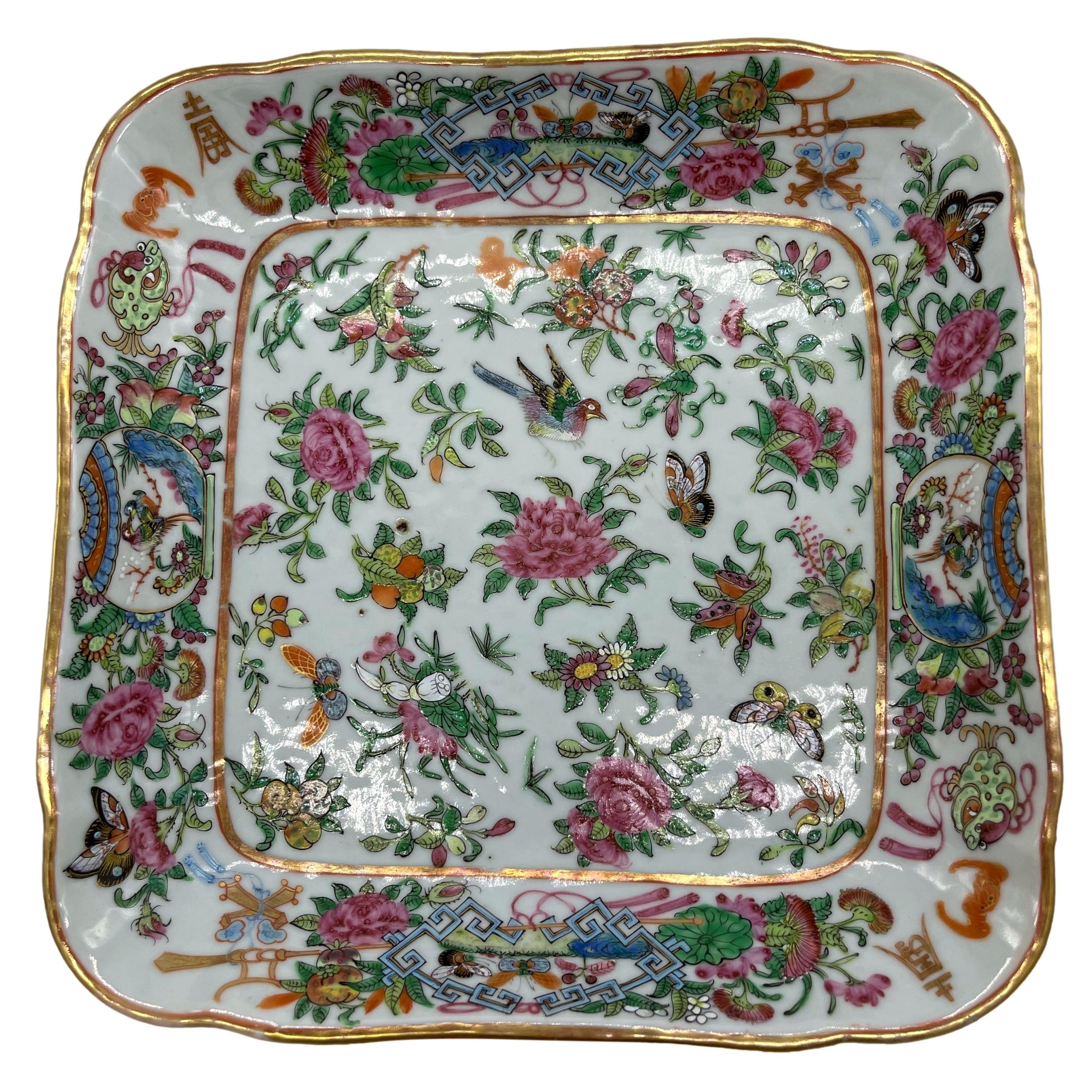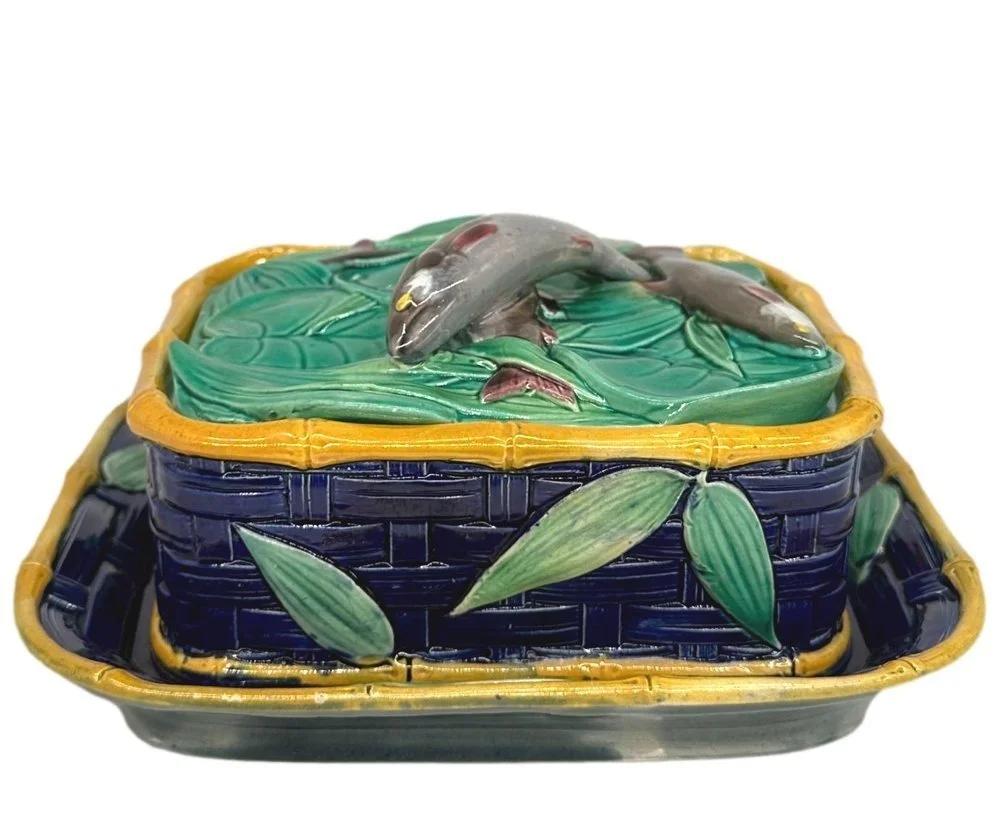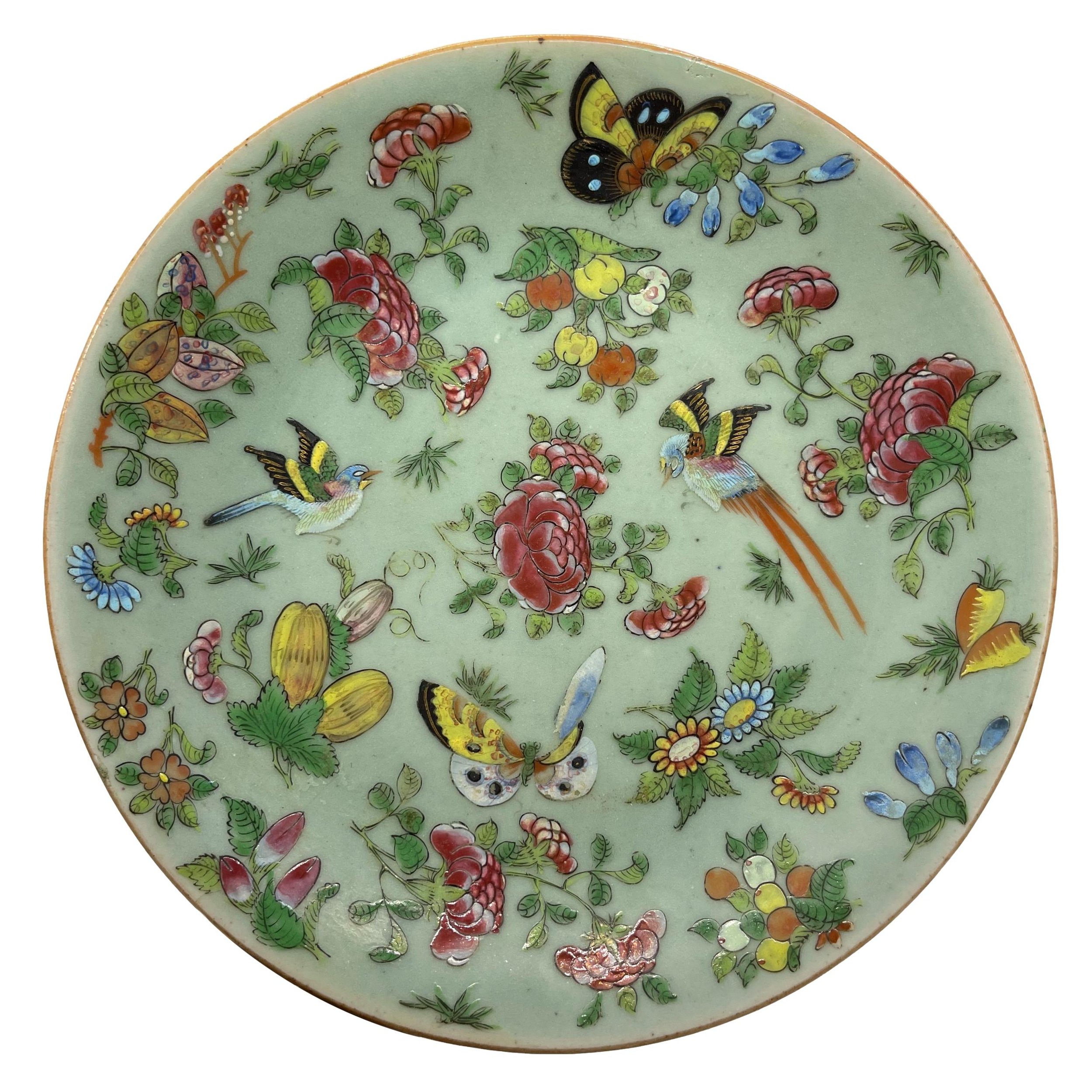 Image 1 of 9
Image 1 of 9

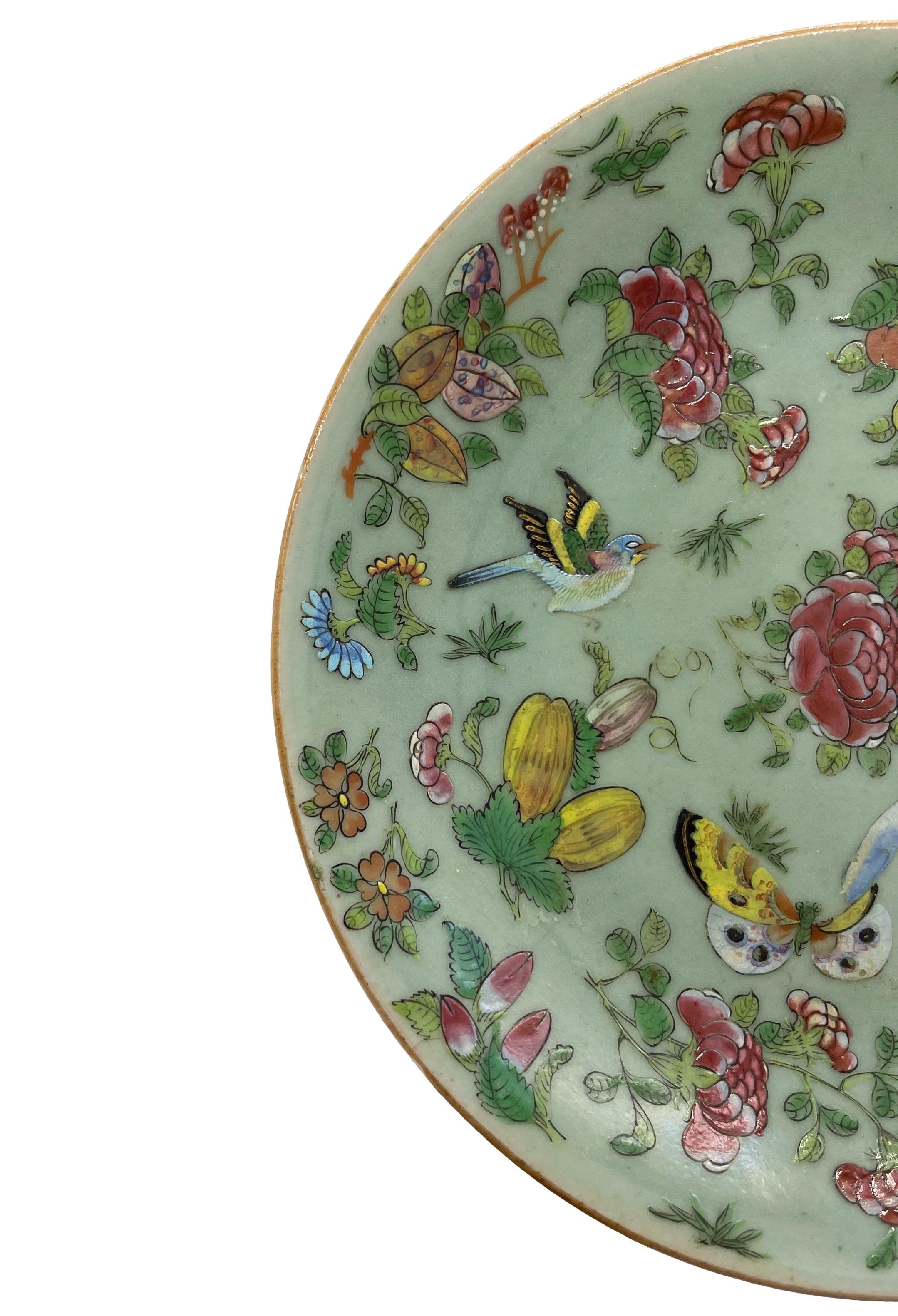 Image 2 of 9
Image 2 of 9

 Image 3 of 9
Image 3 of 9

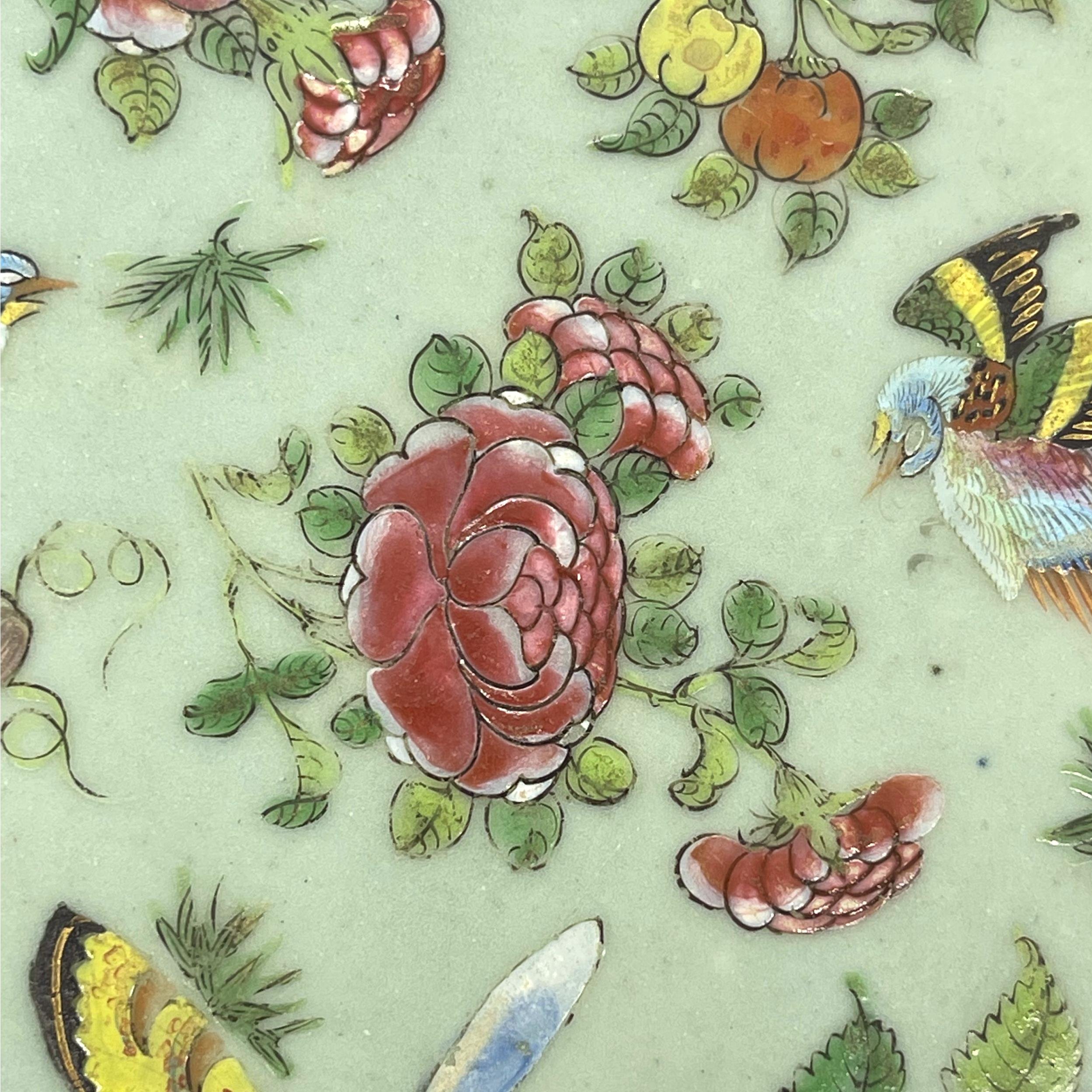 Image 4 of 9
Image 4 of 9

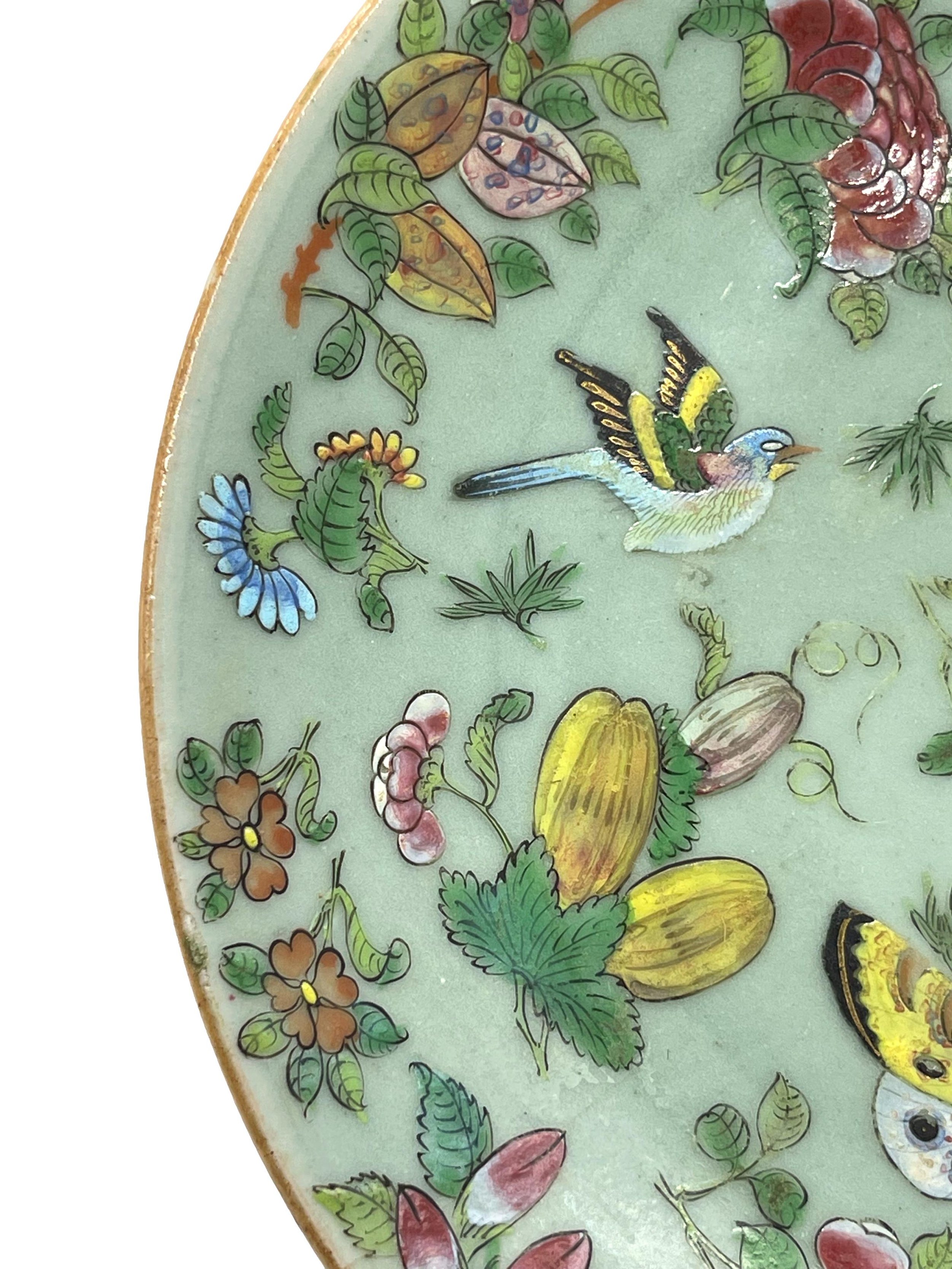 Image 5 of 9
Image 5 of 9

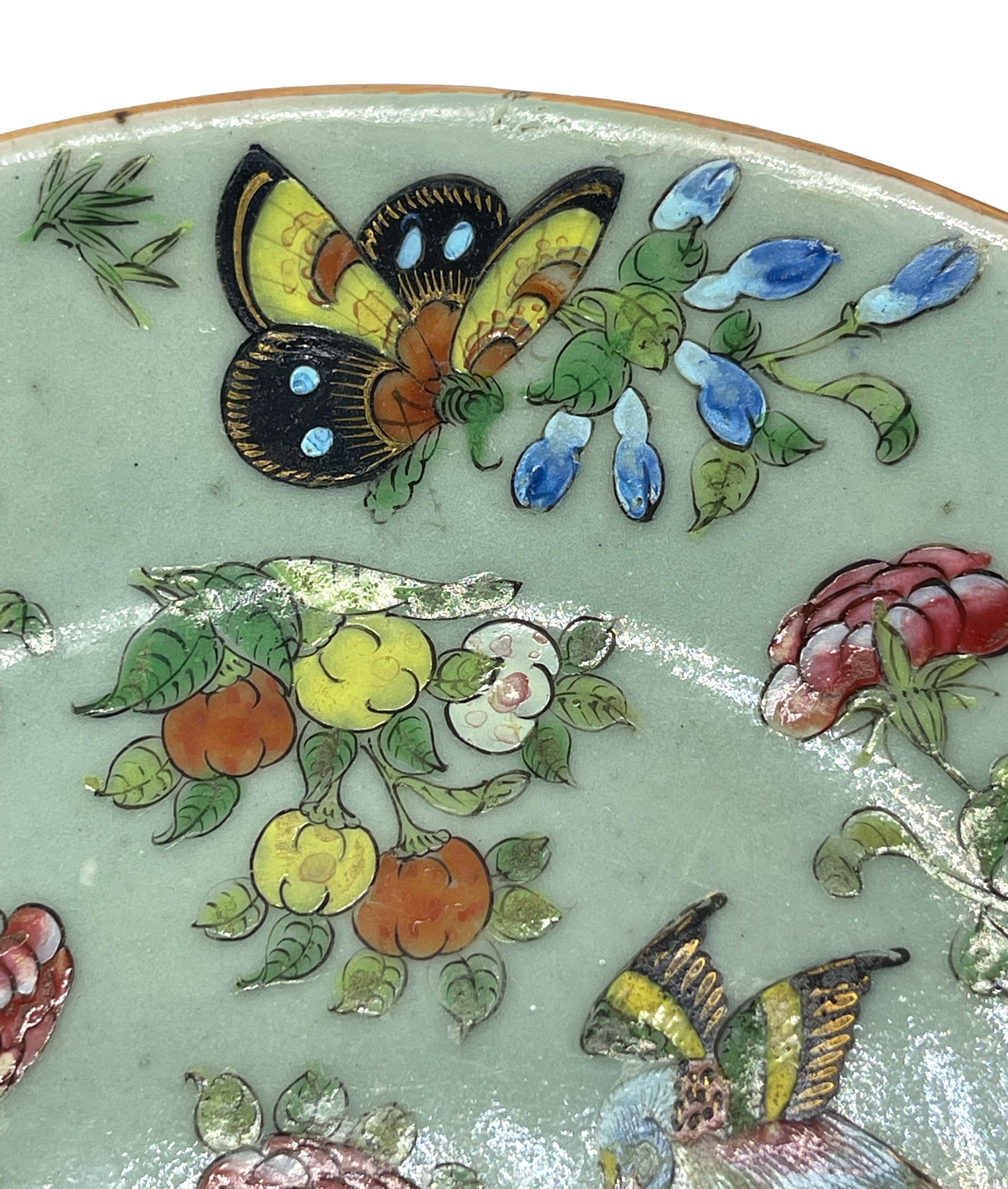 Image 6 of 9
Image 6 of 9

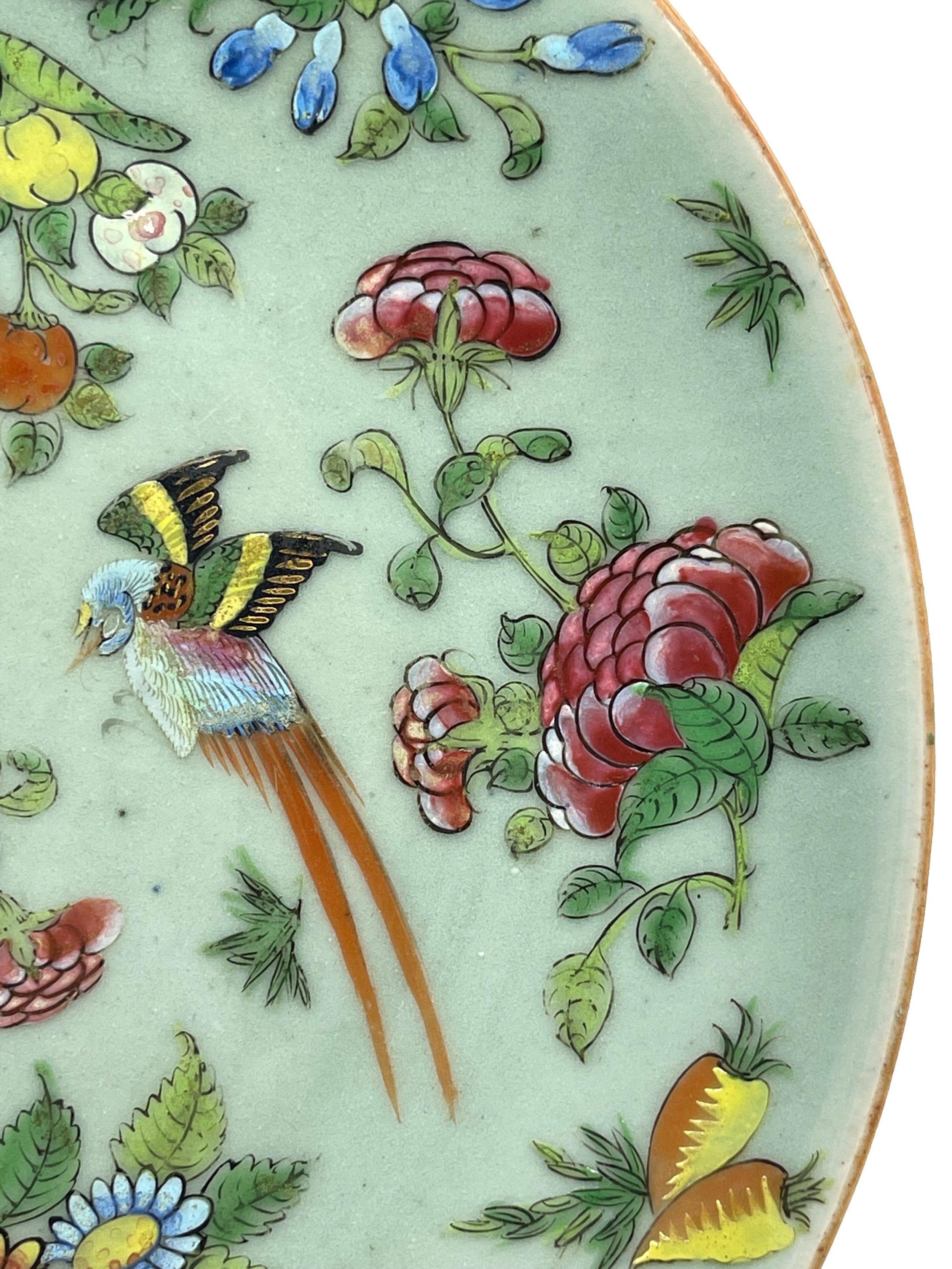 Image 7 of 9
Image 7 of 9

 Image 8 of 9
Image 8 of 9

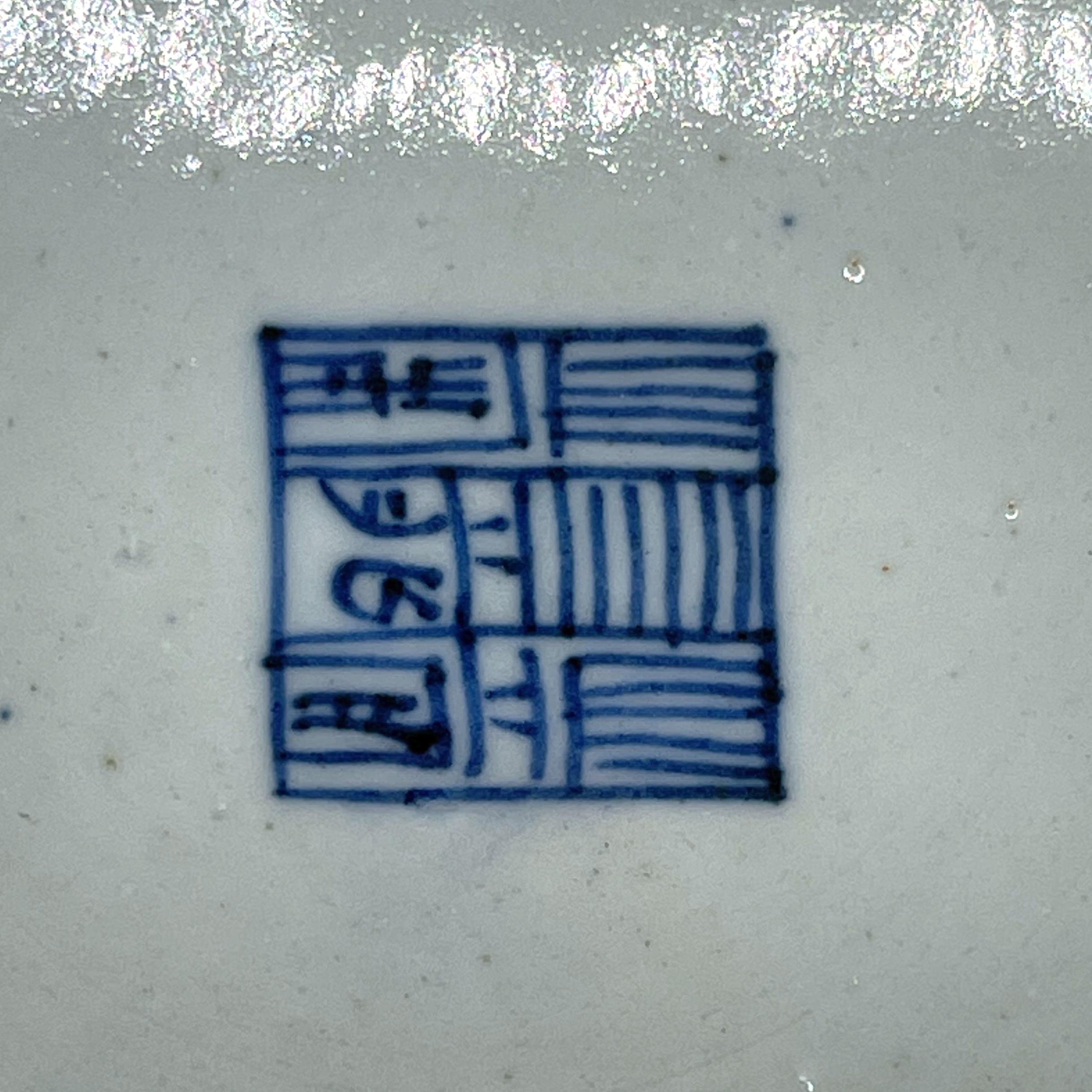 Image 9 of 9
Image 9 of 9

Chinese Celadon Famille Rose 10-inch Plate, Canton, Qing Dynasty, ca. 1850
Chinese Export Porcelain Celadon Famille Rose 10-inch plate, Cantonese, Qing Dynasty, ca. 1850, profusely decorated in polychrome enamels depicting pheasants, butterflies, fruit, and florals on a blue-green celadon ground, the reverse with underglaze blue seal.
Made in Jingdezhen for export to the West from ca. 1840 to 1890, celadon wares may not have been a decorative choice so much as a necessity. Nadler states:
"Probably the use of celadon was contemporaneous with the Taiping Revolt. According to this hypothesis, celadon was used as a substitute for white blanks which were no longer available, for the Taipings had demolished Jingdezhen's kilns."*
* Daniel Nadler, CHINA TO ORDER: Focusing on the XIXth Century and Surveying Polychrome Export Porcelain of the Qing Dynasty (1644-1908). Paris: Vilo International, 2001, Digital Reprint with the assistance of the Winterthur Museum, 2012, p. 154.
Chinese Export Porcelain Celadon Famille Rose 10-inch plate, Cantonese, Qing Dynasty, ca. 1850, profusely decorated in polychrome enamels depicting pheasants, butterflies, fruit, and florals on a blue-green celadon ground, the reverse with underglaze blue seal.
Made in Jingdezhen for export to the West from ca. 1840 to 1890, celadon wares may not have been a decorative choice so much as a necessity. Nadler states:
"Probably the use of celadon was contemporaneous with the Taiping Revolt. According to this hypothesis, celadon was used as a substitute for white blanks which were no longer available, for the Taipings had demolished Jingdezhen's kilns."*
* Daniel Nadler, CHINA TO ORDER: Focusing on the XIXth Century and Surveying Polychrome Export Porcelain of the Qing Dynasty (1644-1908). Paris: Vilo International, 2001, Digital Reprint with the assistance of the Winterthur Museum, 2012, p. 154.
Chinese Export Porcelain Celadon Famille Rose 10-inch plate, Cantonese, Qing Dynasty, ca. 1850, profusely decorated in polychrome enamels depicting pheasants, butterflies, fruit, and florals on a blue-green celadon ground, the reverse with underglaze blue seal.
Made in Jingdezhen for export to the West from ca. 1840 to 1890, celadon wares may not have been a decorative choice so much as a necessity. Nadler states:
"Probably the use of celadon was contemporaneous with the Taiping Revolt. According to this hypothesis, celadon was used as a substitute for white blanks which were no longer available, for the Taipings had demolished Jingdezhen's kilns."*
* Daniel Nadler, CHINA TO ORDER: Focusing on the XIXth Century and Surveying Polychrome Export Porcelain of the Qing Dynasty (1644-1908). Paris: Vilo International, 2001, Digital Reprint with the assistance of the Winterthur Museum, 2012, p. 154.


